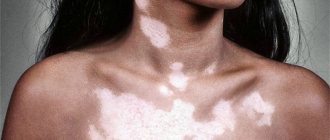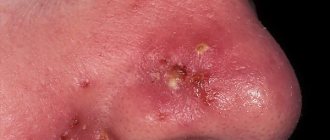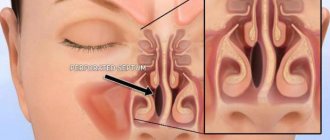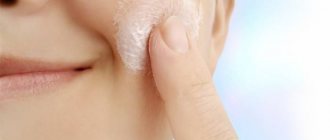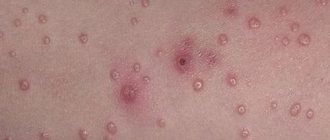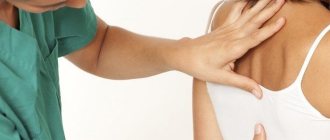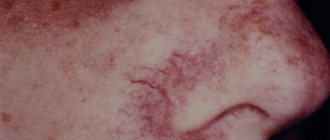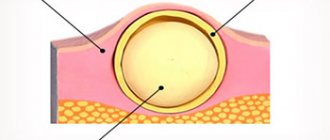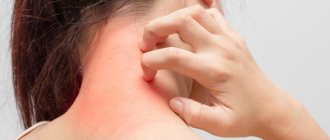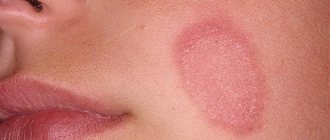The mammary glands in boys and girls are identical before puberty. At the age of 12-13, the male body begins to synthesize the hormone testosterone, which should be used to build a male body and form secondary sexual characteristics. Where then does enlarged breasts come from - gynecomastia in adolescents?
The fact is that many boys enter adolescence overweight. Malnutrition - lack of a full breakfast and frequent consumption of fatty and sweet foods leads to excess deposition of fatty tissue in the hips, lower back, abdomen and chest. This is also facilitated by the refusal of sports activities and a sedentary lifestyle. As soon as puberty occurs, the male hormone testosterone can be converted in excess into the female sex hormone estradiol, which forms breasts in such a teenager according to the female type and develops gynecomastia.
There is another option - physiological gynecomastia, associated with a sharp increase in testosterone levels, which goes away on its own in adolescents within a short time after its onset.
Gynecomastia in adolescence
"Wait until you're 18..."
As a rule, parents of such children turn to an endocrinologist and are advised to wait indefinitely. This statement is paradoxical. If gynecomastia does not go away on its own within six months after its occurrence, it can no longer disappear. The growth of the rudimentary mammary gland is controlled by hormones, and it is estrogens that are responsible for this process. Figuratively speaking, the mammary glands do not care in which body they exist - male or female. They will behave as their hormones tell them to. That is, despite the fact that gynecomastia is a pathology in the male body, the growth of the mammary glands is a natural phenomenon in the event of an increase in estrogen levels. The formed mammary gland is essentially an organ that cannot disappear anywhere.
In our practice, there have been cases when desperate young people sought surgical help immediately after reaching adulthood due to a lack of mutual understanding with their parents, who were afraid to have surgery or hoped that gynecomastia would disappear.
Diagnostics
To determine the type of pathology, consultation with a specialist is necessary. For differential diagnosis, it is important to know the patient’s medical history, lifestyle, diet and amount of physical activity, height and weight ratio. An important indicator is the distribution of the fat layer, characteristic areas of body hair, and the timbre of the voice. The appearance of the genital organs, sexual desire, erectile function, testicular failure, and fertility are assessed.
One of the diagnostic methods is palpation examination; with gynecomastia it is extremely painful. If there is a lot of fat, it is difficult to determine the pathology by touch. To exclude the true or mixed form, the following additional procedures are performed:
- analysis of hormone levels;
- biochemical blood test;
- mammography;
- Ultrasound of the mammary glands, if necessary – testicles;
- CT or MRI of the adrenal glands in adolescents;
- biopsy of gland tissue to determine its composition.
If you suspect a pathology, you will need to consult an endocrinologist. It is important to exclude diseases that can provoke obesity and breast growth in men. If the hormonal changes are minor, the patient is referred to a nutritionist, and a consultation with a plastic surgeon may also be necessary.
Leave breasts to women and be men!
Adolescent gynecomastia is not only a medical, but also a social problem. Female breasts in a young man can be a serious obstacle to the formation of his personality as a man. Sports activities, equal relationships with peers, and communication with the opposite sex can be difficult or even impossible for boys with gynecomastia. We know examples when teenagers became withdrawn, preferred “communication with the computer” to social contacts, fell into depression, lost motivation to study, develop physically and become men.
In addition to psychological complexes and social maladjustment, such adolescents experience poor posture. In an effort to hide women's breasts, they stoop for many years, which leads to curvature of the spine. Some young men are forced to bandage their breasts with elastic bandages or cover their areolas with a plaster. There is no point in hoping that gynecomastia will go away over time. It is impossible to get rid of breasts with the help of medications.
Development of mastitis in children and adolescents
It should be understood that mastitis, or rather its non-lactation form, can develop not only among women. In fact, inflammation of the breast tissue can be observed in anyone whose body has such mammary glandular tissue.
As a conclusion, we note that if a child has glandular breast tissue (and this is what is considered a variant of the norm), then under certain circumstances it can grow (conditions of mastopathy or gynecomastia), change and become inflamed, forming mastitis.
If we talk about the development of inflammation of the mammary gland of our children, then we will definitely discuss the non-lactation form of such a disease as mastitis. So, mastitis in newborns or adolescents, as well as mastopathy, can be pathological/physiological.
For example, it is believed that in the first days after the birth of newborns (both boys and girls), serious changes and significant changes in the body await.
Unfortunately, both mastitis and mastopathy or gynecomastia can take their own pathological forms.
Content
Mastopathy in children is a fairly common and widespread disease among children, requiring attention not only during the treatment period, but also when determining the reason why it occurred.
Childhood mastopathy is quite common
In older children, this disease manifests itself as severe pain in the affected area; in children, it is refusal to eat, sleep disturbances and constant whims. Small cysts and very dense fibrous tumors form in the child’s chest.
When diagnosing herpes, the pediatrician will not recommend antibacterial tablets. Antiviral drugs will be prescribed as the main therapy, and broad-spectrum antibiotics will be prescribed as concomitant therapy to prevent such dangerous consequences. Needless to say, hospitalization and constant medical supervision are indicated for young children under 3 years of age and infants.
Children will be prescribed an antibacterial agent in case of elevated temperature that lasts more than 5 days, subtle signs of an inflammatory process on the body, as well as suspected necrotizing tonsillitis or pneumonia, which can be considered the most “harmless” complications.
As for pregnant women, taking the most harmless medicine should be agreed with a doctor. A pregnant woman bears double responsibility - for her own health and that of her child. Antibiotics are prescribed if the benefit to the mother far outweighs the risk to the fetus. Of the listed antibiotics, only Erythromycin can be taken during pregnancy, and only in case of emergency.
Diagnosis of teenage gynecomastia
Diagnosing juvenile gynecomastia is not difficult. In most cases, an examination by a specialist is enough to make the correct diagnosis. Ultrasound can be an auxiliary diagnostic method.
The main task of the doctor is to exclude hormonal disorders, as well as genetic diseases, the symptom of which may be gynecomastia. If there are none, and gynecomastia is a manifestation of a hormonal imbalance noted during puberty or obesity in a teenager, treatment can only be surgical. Of course, such a young person needs to be oriented towards a healthy lifestyle, motivated to eat right and play sports. Often the first step on the path to physical rehabilitation is a surgical operation to get rid of female breasts.
Why does it happen
Adolescent gynecomastia occurs during the period when boys reach puberty, which is why it is also called pubertal gynecomastia. The youthful changes in the boy’s body structure are explained by hormonal changes in the body, its temporary imbalance. This imbalance develops for several reasons:
- Insufficient production of testosterone or conversion of some of it into estrogens (female sex hormones).
- Increase in body weight due to the boy’s adipose tissue (adolescent obesity).
- Adolescent use of certain medications during long-term treatment of serious illnesses.
- Tumors of the pituitary gland, testicles, adrenal glands.
- Trauma and direct damage to the adolescent mammary gland area.
The lack of testosterone production is facilitated by factors that change its synthesis by the testes and adrenal glands. Most often this happens with youthful functional immaturity of these organs during puberty. During a “hormonal explosion” in boys, part of the testosterone can be converted into estrogens due to increased activity of the aromatase enzyme. An increase in blood estrogen is manifested (except for gynecomastia) by acne of adolescence, increased oily skin, deposition of subcutaneous fat of the female type (on the chest, hips, abdomen), and some nervousness.
Obesity in boys causes adipose tissue to deposit estrogen, which maintains a state of hormonal imbalance. Juvenile gynecomastia occurs when a teenager is treated for tuberculosis, HIV, severe liver and kidney diseases. The medications taken affect the synthesis of sex hormones in boys, increasing the level of estrogen in the blood. Regular drug use (including youth alcoholism, early smoking) leads to the same results.
A tumor of the pituitary gland (prolactinoma) stimulates the rapid growth of the mammary glands, gynecomastia in boys reaches large sizes. In adolescents, prolactinoma causes delayed sexual development due to inhibition of testosterone synthesis. Tumors, injuries, inflammation of the testicles, and adrenal glands in adolescence can also cause a decrease in the level of male sex hormones and the appearance of enlarged mammary glands during puberty. A rare option is their increase in a teenager due to their tumor; unilateral development of the process is more common in boys.
Treatment of gynecomastia in adolescents
Treatment for gynecomastia is only surgical. Even in the case of a false form, when there is an excessive accumulation of fatty tissue in the chest area, it cannot be removed otherwise. Diets and exercise will, of course, lead to a decrease in breast volume, but this fat will not completely disappear, since it contains a fibrous component - a frame that forms the semblance of a woman’s breasts. As for mixed and true forms of gynecomastia, they contain a glandular component that can only be removed surgically.
Surgery to remove gynecomastia in adolescents is easily tolerated and rarely exceeds 30 minutes. At least we can say this based on 10 years of experience and more than 2,000 successfully completed operations. The procedure is performed through mini-accesses along the lower borders of the areolas, through which hypertrophied mammary glands, as well as excess fatty tissue, are removed. Smooth surfaces are formed. Sometimes areola plastic surgery is required - reducing them. Hospitalization in a hospital is 1-2 days. After surgery, it is recommended to use special compression garments, which are selected individually in the clinic. It is recommended to refrain from physical activity for 3 weeks.
Diagnosis and treatment
First of all, when the first sign of pathology appears, it is better to contact an endocrinologist. Diagnosis will consist of examination, palpation, determination of the type, cause and stage of the pathology; a complete medical history, hormonal blood test and examination of the functioning of other body systems to identify various diseases must also be carried out. Typically, gynecomastia in adolescents does not require surgical or drug treatment, as it goes away completely on its own. But if this pathology has been going on for more than two years, then some kind of treatment will still be required. Also, drugs are prescribed if the mammary glands have a diameter of more than three and a half centimeters. If the cause of gynecomastia is insufficient secretion of androgens, the doctor may prescribe medications that contain male sex hormones. Also during the treatment period, the teenager should take vitamin and mineral complexes. Sometimes doctors prescribe sedatives for children based on medicinal plants. Most often it is a tincture of valerian or motherwort. If the mammary glands are significantly enlarged in size, and no medications help, then surgery is performed. Surgeons perform a subcutaneous mastectomy, preserving both nipples. This surgical intervention is cosmetic in nature and is designed to reduce the patient’s worries about his enlarged mammary glands.
Diagnostic features
The doctor determines the presence of pathology through visual examination of the mammary glands and palpation. The boy's genitals can also be examined. Also mandatory studies for suspected gynecomastia are:
- Ultrasound of testicles and mammary glands;
- analysis of the patient’s blood for the content of hormones;
- X-rays of light;
- mammography, breast biopsy if there are lumps in it.
Only as a result of a full examination will the doctor be able to make the correct diagnosis and determine the direction of further treatment.
Treatment
During adolescence, diffuse enlargement of the mammary gland is observed. Its appearance is associated with hormonal changes in the body, which is accompanied by:
- constant or frequent stressful situations;
- taking medications containing hormones;
- disruption of the endocrine system;
- liver diseases.
Treatment of mastopathy in adolescents is based on taking vitamin complexes, as well as some sedatives. Hormonal medications are prescribed only in extreme cases when other therapeutic measures have failed. In parallel with medications, you can use alternative medicine recipes. For therapeutic measures at home, compresses, infusions and decoctions of burdock, motherwort, celandine and string are suitable. From ready-made herbal preparations, juice from wheat sprouts is suitable.
In the absence of harvested herbs in winter and spring, you can use cabbage leaves, Kalanchoe and honey for compresses. Only cabbage leaves fully retain the set of nutrients until December, after which it will not have the desired therapeutic effect.
The primary methods in the complex treatment of mastopathy in adolescents are rational physical and psychological stress. If possible, the child should be protected from stressful situations and ensure adequate sleep lasting at least 8-9 hours.
Symptoms of the disease
The symptoms of mastopathy in teenage boys and men are similar to those in women. The only difference is that in women the symptoms are more pronounced during menstruation, which gives reason to consult a doctor.
Mastopathy in men is expressed by symptoms such as:
- When you feel the breast, lumps are clearly visible and have clear contours.
- Seals come in different shapes and sizes. They can be single or multiple.
- When pressing on the nipples, a colorless liquid is released. The discharge may be mucous or purulent.
- If the disease affects only one mammary gland, there is a clearly defined asymmetry of the glands.
- When pressing on the chest, aching, pulling or bursting pain is felt. Also, the breast may hurt without touching or the pain may be completely absent.
- Severe pain when touching the nipples.
Mastopathy in men often occurs together with gynecomastia (enlargement of the mammary gland in a man, caused by the growth of glandular tissue, fat and muscles):
Which doctor should I contact?
If even one symptom is detected, a man should consult a doctor for an accurate diagnosis and timely treatment. This could be: a mammologist, urologist or endocrinologist.
The doctor will palpate the mammary glands, conduct the necessary survey, clarify complaints and give directions for the necessary tests to accurately confirm the diagnosis.
REFERENCE Malignant tumors in the mammary glands are much more common in men than in women.
Therefore, even a slight lump should alert a man and become a reason for a comprehensive examination of the mammary glands.
Symptoms and forms of the disease
External manifestations of fibrocystic mastopathy include:
- sensation of a foreign body and pain in the chest;
- changes in the size, shape or position of the mammary gland, its asymmetry, swelling;
- swelling or change in consistency;
- discharge of opaque fluid from the chest.
In addition to the above symptoms, mastopathy can manifest as general malaise, headaches, radiating pain in the back and neck, dizziness and depression.
The pathological process can occur in various forms, depending on the predominance of one or another component in the pathomorphology. In the thickness of the mammary gland, predominantly glandular or fibrous connective tissue can grow. If mastopathy forms several cystic nodes, then this form is called nodular.
The most common form of mastopathy in teenage girls is mixed type fibroadenoma with a predominance of glandular and fibromatous components. Develops after 12 years of age and can grow quite quickly. This benign tumor requires careful monitoring, since according to statistics, up to 2% of all fibroadenomas can develop into breast cancer.
